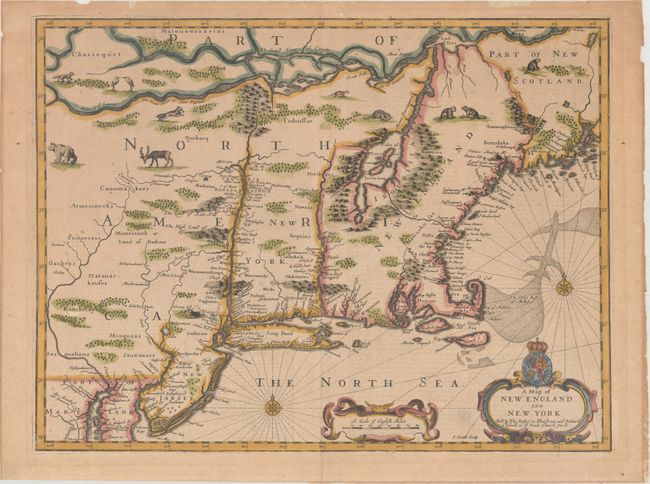Subject: Colonial New England & Mid-Atlantic United States
Period: 1676 (published)
Publication: A Prospect of the Most Famous Parts of the World
Color: Hand Color
Size:
19.8 x 14.9 inches
50.3 x 37.8 cm
An important map of the British colonies in North America covering the east coast from Maryland and New Jersey northward through New York and New England to the French possessions in Canada. It is based on the Jansson/Visscher maps that formed the foundation for maps of the region. It illustrates the territories acquired by the British with the capture of New Amsterdam in 1664, which radically shifted European influence in the colonies from the Dutch to the English. While the map's geographical features closely follow the prototype, the nomenclature is substantially anglicized. It is the first appearance of the name Boston, and the first map to use the term New York for both Manhattan and the colony. It is also one of the first maps to show New Jersey. With its exaggerated depiction of Lake Champlain (Lake of the Irocoisiensi or Irocoisen) and confusing river systems, the map emphasizes how little was known of the wilderness beyond the coasts and river valleys of New England during this early colonial period. It is richly embellished with various animals in the interior of the map, two compass roses, two cartouches and a coat of arms. Normally referred to as Speed’s Map of New England this famous map actually appeared 47 years after his death and was engraved by Francis Lamb for inclusion in the last edition of Speed’s popular atlas, published by Basset and Chiswell. The English text on verso provides fascinating information on the colonies.
References: Burden #455; McCorkle #676.6; Tooley (Amer) pp. 290-291; Shirley (BL Atlases) T.SPE-2f #23.
Condition: B+
Pleasant light toning with a short centerfold separation at bottom that has been closed on verso with old paper. An edge tear at top that extends 1" into the image with a minuscule amount of image loss has been closed on verso with archival tape. The top blank margin has a few minor chips and has been reinforced on verso with old paper.


